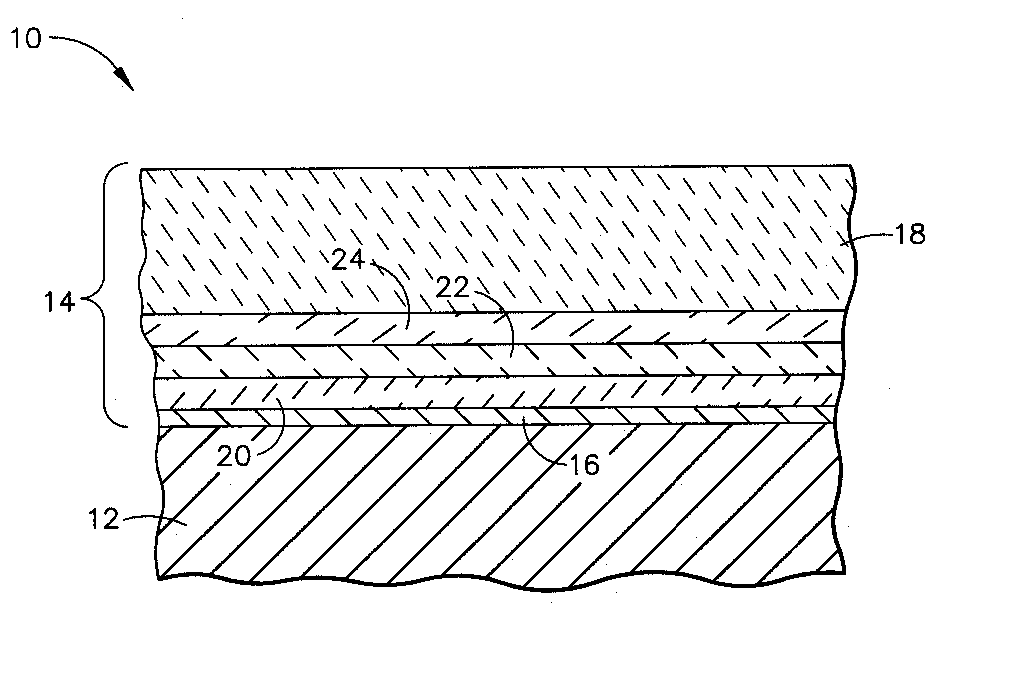Thermal/environmental barrier coating system for silicon-containing materials
a technology of thermal/environmental barrier and silicon-containing materials, applied in the direction of superimposed coating process, natural mineral layered products, machines/engines, etc., can solve the problems of thermal and mechanical properties loss, through-thickness and horizontal cracking, and the component formation of si-based ceramics loses mass and receding, so as to improve the life of the coating system, reliably provide thermal and environmental protection, and good cte match
- Summary
- Abstract
- Description
- Claims
- Application Information
AI Technical Summary
Benefits of technology
Problems solved by technology
Method used
Image
Examples
Embodiment Construction
[0011] The present invention is generally applicable to components that operate within environments characterized by relatively high temperatures, and are therefore subjected to severe thermal cycling and stresses, oxidation, and corrosion. Notable examples of such components include combustor components, turbine blades and vanes, and other components within the hot gas flow path of gas turbine engines. A surface region 12 of a hot section component 10 is represented in FIG. 1 for purposes of illustrating the invention. The component 10, or at least the surface region 12 of the component 10, is formed of a silicon-containing material, such as a metal silicide alloy, a metal matrix composite reinforced with silicon carbide, silicon nitride, and / or silicon, a composite having a matrix of silicon carbide, silicon nitride, and / or silicon, or a composite with a silicon carbide, silicon nitride, and / or silicon matrix reinforced with silicon carbide, silicon nitride and / or silicon. However...
PUM
| Property | Measurement | Unit |
|---|---|---|
| temperatures | aaaaa | aaaaa |
| thickness | aaaaa | aaaaa |
| thickness | aaaaa | aaaaa |
Abstract
Description
Claims
Application Information
 Login to View More
Login to View More - R&D
- Intellectual Property
- Life Sciences
- Materials
- Tech Scout
- Unparalleled Data Quality
- Higher Quality Content
- 60% Fewer Hallucinations
Browse by: Latest US Patents, China's latest patents, Technical Efficacy Thesaurus, Application Domain, Technology Topic, Popular Technical Reports.
© 2025 PatSnap. All rights reserved.Legal|Privacy policy|Modern Slavery Act Transparency Statement|Sitemap|About US| Contact US: help@patsnap.com


